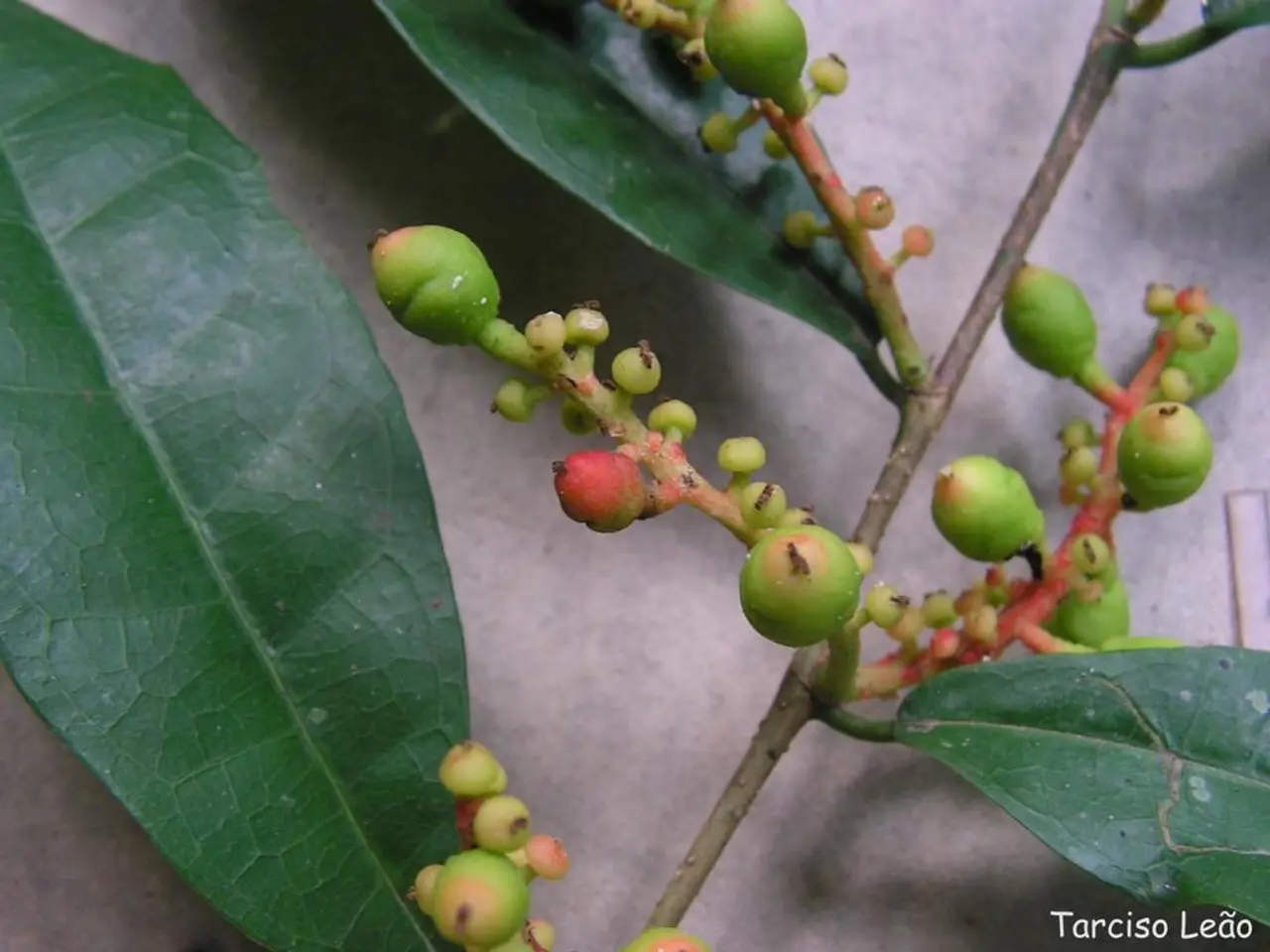Methods for Trimming and Cultivating a Fig Tree
Pruning Fig Trees in the UK: A Seasonal Guide
Fig trees, a delightful addition to any garden, thrive in the UK climate with the right care and pruning. Here's a guide on how to prune fig trees according to the seasons.
Spring:
Prune fig trees once the risk of frost has passed, typically between late winter and early spring. At this time, remove any frost-damaged wood and thin out weak or crowded branches to encourage strong structure and enhance airflow. This timing supports healthy new growth and fruit production on the new year's wood [1][4].
Summer:
Light pruning can be done in summer to remove excess shoots and maintain the tree’s shape, but avoid heavy cutting into old wood. Summer pruning is mainly to manage vigorous growth and balance foliage with fruiting branches [1].
Autumn:
Generally, fig trees are not heavily pruned in autumn. However, a light trim after harvesting can remove any damaged or diseased wood and prepare the tree for dormancy. Hard pruning is better delayed until late winter or early spring to avoid reducing next season’s crop [1].
Figs produce fruit on the new growth of the current year, so pruning focuses on encouraging healthy shoots in spring and managing growth sparingly in summer without cutting back old wood heavily [3]. This seasonal approach ensures a good balance between maintaining structure and maximizing fruit yield in the UK climate.
Training Fig Trees
To train a fig tree as a bush or standard, prune annually to maintain a well-balanced bowl shape. In autumn, there's no need to prune a fig tree, but large unripened fruits should be removed. In spring, prune dead, crossing, or weak branches back, leaving a 2.5cm stub, and remove one or two of the oldest branches [2]. Long, bare branches should be pruned back hard, leaving stubs of 5-8cm. In early summer, shorten all sideshoots to five leaves from the base [2].
Additional Tips
Fig trees can grow to around 5m by 3m in the UK. To curb growth, a more effective way is by restraining the roots, such as growing the fig in a large container or sinking a large pot into the ground. It's not recommended to cut the top off a fig tree to restrict its growth [2].
In cold regions of the UK, fig trees can be covered with horticultural fleece to protect them from weather damage. If you're starting a fan-trained fig, consider buying a part-trained fan tree from a garden center [5].
Harvesting Figs
Figs produce two crops in the UK: one in late summer and another in late spring. To get a good crop, avoid cutting too many fruiting branches off during pruning [3].
[1] RHS - Royal Horticultural Society (https://www.rhs.org.uk/advice/profile?PID=317) [2] Gardeners' World (https://www.bbc.co.uk/gardening/howto/plants/fig) [3] BBC Gardening - Pruning Fig Trees (https://www.bbc.co.uk/gardening/howto/pruning/figtree) [4] The Spruce - How to Prune a Fig Tree (https://www.thespruce.com/pruning-fig-tree-3122790) [5] The Guardian - Fig trees: how to grow and care for them (https://www.theguardian.com/lifeandstyle/gardening-blog/2013/may/25/fig-trees-grow-care)
- Maintaining a healthy lifestyle, gardening in the home-and-garden setting could involve nurturing and pruning fig trees, providing new growth and fruit production, especially during spring.
- After the harvest, light trimming of fig trees in autumn serves to remove diseased or damaged wood, better preparing the tree for dormancy and the following year's growth, while heavy pruning for more extensive shape management is best left for late winter or early spring, supporting a balance between maximum fruit yield and structural maintenance.




